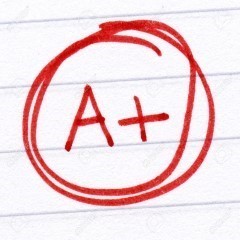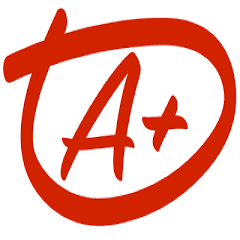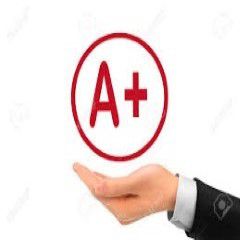APU ACCT300 ACCT300 Week 3 QUIZ ANSWER
Question 1 of 20
The bank reconciliation:
A.should be prepared by an employee who records cash transactions.
B.is part of the internal control system.
C.is for information purposes only.
D.is sent to the bank for verification.
Question 2 of 20
A note receivable due in 90 days is listed on the balance sheet under:
A.long-term liabilities.
B.fixed assets.
C.current liabilities.
D.current assets.
Question 3 of 20
Of the three widely used inventory costing methods (FIFO, LIFO, and average), the FIFO method of costing inventory is based on the assumption that costs are charged against revenues in the order in which they were incurred.
A. True
B. False
Question 4 of 20
A credit memorandum from the bank:
A.decreases a bank customer’s account.
B.is used to show a bank service charge.
C.shows that a company has deposited a customer’s NSF check.
D. shows the bank has collected a note receivable for the customer.
Question 5 of 20
Inventories of merchandising and manufacturing businesses are reported as current assets on the balance sheet.
A. True
B. False
Question 6 of 20
Cash equivalents include:
A.checks.
B.coins and currency.
C.money market funds and commercial paper.
D.stocks and short-term bonds.
Question 7 of 20
Inventory refers to the:
A.merchandise held for sale in the normal course of business.
B.materials sold during the year.
C.assets purchased to assist the production process.
D.claims arising from the purchase of raw material.
Question 8 of 20
The purpose of the Sarbanes-Oxley Act of 2002 is to:
A. restore public confidence and trust in the financial statements of publicly held companies.
B.require all companies to prepare financial statements.
C.protect companies from demands of investors, stockholders, and creditors.
D.do all of these.
Question 9 of 20
In reference to a promissory note, the person who makes the promise to pay is called the:
A.maker.
B.payee.
C.seller.
D.receiver.
Question 10 of 20
If the cost of an item of inventory is $60 and the current replacement cost is $65, the amount included in inventory according to the lower-of-cost-or-market method is:
A.$5
B.$60
C.$65
D.$125
Question 11 of 20
Money market funds, commercial paper, and U.S. Treasury Bills are examples of cash equivalents.
A. True
B. False
Question 12 of 20
A note receivable due in 90 days is listed on the balance sheet under:
A.long-term liabilities.
B.fixed assets.
C.current liabilities.
D.current assets.
Question 13 of 20
Inventory costing methods place primary emphasis on assumptions about:
A.flow of goods.
B.flow of costs.
C.flow of goods or costs depending on the method.
D.flow of values.
Question 14 of 20
Inventories of merchandising and manufacturing businesses are reported as current assets on the balance sheet.
A. True
B. False
Question 15 of 20
The use of the lower-of-cost-or-market method of inventory valuation increases the gross profit for the period in which the inventory replacement price declined.
A. True
B. False
Question 16 of 20
The maturity value of a 12%, 60-day note for $5,000 is $5,100. (Assume 360 days in a year)
A. True
B. False
Question 17 of 20
Of the three widely used inventory costing methods (FIFO, LIFO, and average), the FIFO method of costing inventory is based on the assumption that costs are charged against revenues in the order in which they were incurred.
A. True
B. False
Question 18 of 20
The use of the lower-of-cost-or-market method of inventory valuation increases the gross profit for the period in which the inventory replacement price declined.
A. True
B. False
Question 19 of 20
On the bank’s accounting records, customers’ accounts are normally shown as a(n):
A.revenue.
B.liability.
C.asset.
D.expenses.
Question 20 of 20
A minimum cash balance required by a bank is called:
A.cash in bank.
B.cash equivalent.
C.compensating balance.
D.EFT.
APU ACCT300/ACCT300 Week 3 Quiz (ANSWER)
Question 1 of 20 The bank reconciliation: A.should be prepared by an employee who records cash transactions. B.is part of the internal control system. C.is for information purposes only. D.is sent to the bank for verification. Question 2 of 20 A note receivable due in 90 days is listed on the balance sheet under: A.long-term liabilities. B.fixed assets. C.current liabilities. D.current assets. Question 3 of 20 Of the three widely used inventory costing methods (FIFO, LIFO, and average), the FIFO method of costing inventory is based on the assumption that costs are charged against revenues in the order in which they were incurred. A. True B. False Question 4 of 20 A credit memorandum from the bank: A.decreases a bank customer’s account. B.is used to show a bank service charge. C.shows that a company has deposited a customer’s NSF check. D. shows the bank has collected a note receivable for the customer. Question 5 of 20 Inventories of merchan...





Mastermind
Senior JournalistSell Your Solution Report Solution Support Center
Online Users
-
 Mastermind
Today
Mastermind
Today




A+ - Thank you!
Thanks for the positive feedback!